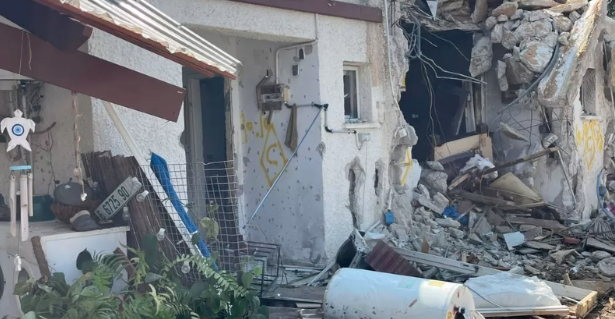Israel
Kfar Aza Attack: A Dark Day in the Israel War

The soft hues of dawn that had for so long promised respite in Kfar Aza were shattered on the 7th of October, as the Israel war thundered into the frame with a ferocity that upended the quietude of life there. The infiltration by Hamas gunmen, piercing the robust defenses of the Gaza border, was not just an incursion but a stark imprint of war’s relentless march into the heartlands of southern Israel. This eruption of hostilities has spread ripples of horror and urgent introspection across a community bound by the pursuit of peace, a nation perennially bracing against the storms of conflict, and a global audience confronting the harsh truths of a seemingly unending struggle. The indelible marks of this day compel us to consider the hauntingly persistent question: What will it take to still the drums of the Israel war that beat a rhythm of division and loss?
To understand the war in Gaza is to navigate a labyrinth of historical grievances and unhealed wounds. The region, cradled by the hands of ancient civilizations, now finds itself choked by the strife of modern contention. This latest eruption of violence does not stand alone; it is the bitter fruit of a tree long planted in the soil of occupation, resistance, and the quest for sovereignty that has come to define the Palestinian-Israeli saga.
Amidst the shattered glass and the ruins of Kfar Aza, the echoes of a fractured community resonate. Here, amid the debris, the tales of disrupted lives and shattered dreams emerge, each household mourning its unique, irreplaceable loss. The 1,400 lives extinguished by the conflict were not mere numbers but the very sinews and souls of a community now fragmented by grief. From the tranquility of kibbutz life to the silent festivals, the region’s heartbeat is now syncopated by a shared bereavement. In the aftermath, personal sagas of anguish and perseverance are shared, their narratives weaving through the collective call for both vengeance and empathy.
The local ambiance has transformed; where children’s laughter once filled playgrounds, now a tense quiet pervades. The scarred landscape stands as a testament to the devastation wrought by each strike, with the people of Kfar Aza adapting to their altered world. In this crucible of conflict, resilience is found in communal bonds, hope in small acts of kindness, and despair in the uncertainty of tomorrow. Amid the rubble, the indomitable spirit of the residents manifests in their daily survival, a testament to their inherent fortitude and the unyielding quest for some semblance of normalcy amidst chaos.
The assault’s tactical surprise has sent shockwaves through Israel’s security echelons, revealing chinks in the armor of one of the world’s most sophisticated defense apparatuses. The scale and ferocity of the raids suggest a calculated move by Hamas—possibly to alter the status quo, to shift the tectonic plates of power in their favor, or to serve as a stark reminder of their presence and resolve amidst a period of heightened tensions and a year stained with the blood of Palestinians in the West Bank.
The declaration of war by Mr. Netanyahu casts a pall over the prospects for peace, hinting at a retaliation that could reshape the region’s dynamics for years to come. In the high-stakes narrative spun by statesmen and militants alike, the truth often becomes the first casualty. As the world seeks clarity, the narratives from both sides of the border demand scrutiny, with questions lingering over the readiness of Israel’s security measures and the intent behind Hamas’s most significant military operation in over a generation.
Kfar Aza now lies as a tableau of devastation, a stark juxtaposition to its once pastoral peace. The air, once filled with the melodies of a music festival, now resonates with a dirge for the fallen. The scars of the land bear witness to the onslaught—each crater, each demolished wall a testament to the ferocity of the assault and the fragility of the human lives caught in its wake.
The aftershocks of the October raid have set in motion a chain of events whose consequences are yet to fully unfold. As the dust settles over the scarred landscapes of Kfar Aza and beyond, the grim tally of loss and the specter of escalation loom large. The war in Gaza, with its deep historical roots and contemporary triggers, stands as a grim reminder of the enduring complexities of a land divided by more than just borders. In the search for meaning amid the chaos, one haunting question lingers—how many more generations must toil under the shadow of a conflict seemingly without end?












You must be logged in to post a comment Login